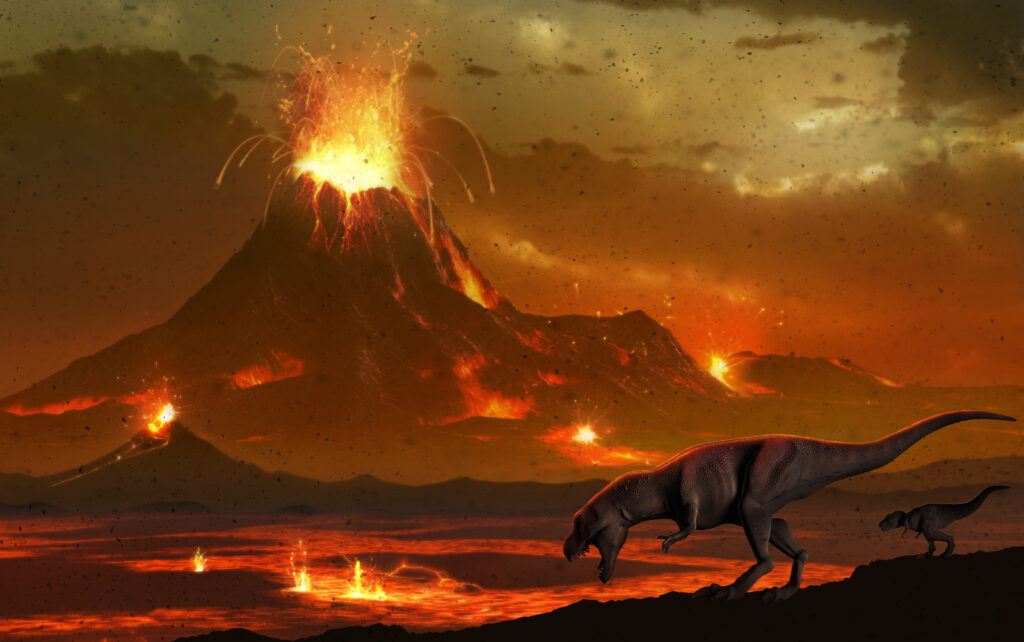For decades, the question of whether it was an asteroid crash or volcanic eruptions that signaled the end of the dinosaurs has been up for debate. Today, researchers are uncovering new information that says the answer might not be so black and white. In a new study led by computational geologist Alexander Cox, his team created a deep learning model that imitates the atmosphere of the period with only volcanic eruptions (no effect of the asteroid). When volcanoes erupt, they release both greenhouse gasses CO2 and SO2. According to Wired, “Over the course of almost a million years, their eruptions produced a million cubic kilometers of lava, burping up 10.4 trillion tons of CO2 and 9.3 trillion tons of SO2.” While the buildup of CO2 does significantly warm the planet, SO2 has a cooling effect. Scientists believe this opposing clash between these gasses also played a role in this mass extinction.
Foraminifera
In the study’s model, they used geological evidence of animal shells on the ocean floor. These organisms, called foraminifera, had shells made of calcium carbonate. When the volcanic eruptions led to ocean acidification due to the increased amount of SO2, these creatures living underneath the water would start dying off. When they begin to die, the carbon that they were going to use for their shells remains out in the open, further acidifying the ocean and warming the planet.
When the foraminifera die, their shells turn into rocks which is what the researchers are studying to understand the atmospheric composition of the time. The deep learning model takes in random amounts of CO2 and SO2 isotopes and builds a probable atmosphere. It then compares it with the data from the shells and makes adjustments.

According to Cox, “It might say, ‘Let’s try adding a bit of CO2 here and a bit less SO2 here.’ We let the model run wild—it keeps going again and again and again.”

The final analysis from this model found that the volcanic eruptions themselves created most of the climate catastrophe that launched the mass extinction. The SO2 and CO2 that led to many species dying off was on its way even before the asteroid hit. In fact, the asteroid did not (comparatively) add a significant amount of CO2 or SO2 to the climate.
Critics of this research point out that using foraminifera for their model would not guarantee complete accuracy every time since they depend on both temperature and composition of seawater. This variance could cause the model to converge to different atmospheric compositions based on the shells. Additionally, while the asteroid may not have had a significant impact on the gas composition of the planet, studies have shown that the dust and particles from its crash could have blocked the sunlight coming to the Earth. The sulfuric acid particles would have blocked the sun for years, causing significant damage to much life on Earth. Lead researcher Julia Brugger says the ensuing temperature drop (from ~81ºF pre-strike to ~41ºF after) could have led to the deaths of 75% of the population on Earth. “For at least three years following the asteroid’s crash, the average annual temperature fell below freezing, and the polar ice caps grew in size… The long-term cooling caused by the sulfate aerosols was much more important for the mass extinction than the dust that stays in the atmosphere for only a relatively short time.”
We began with a clear divide between either the asteroid or the volcanoes caused this mass extinction. Yet as we begin to decipher more information with new technology, it becomes clear that there are nuances to the scenario which are larger than a two choice problem. It was indeed a combination of factors that led to our most recent mass extinction.

